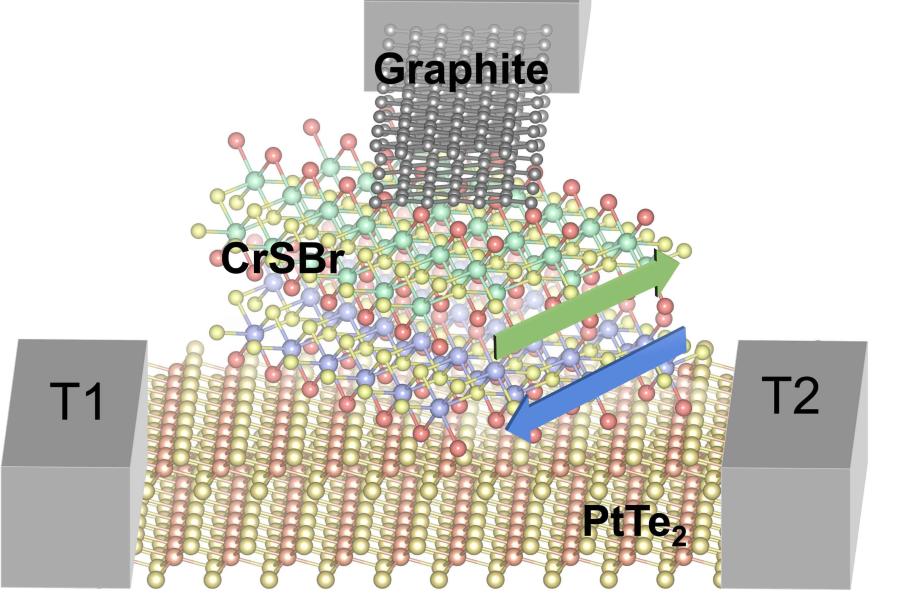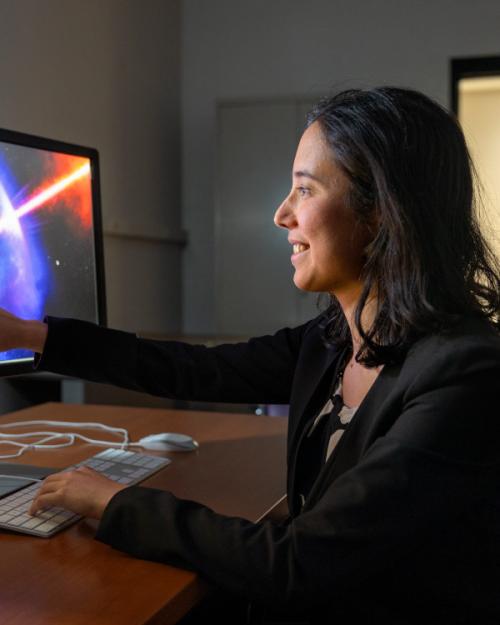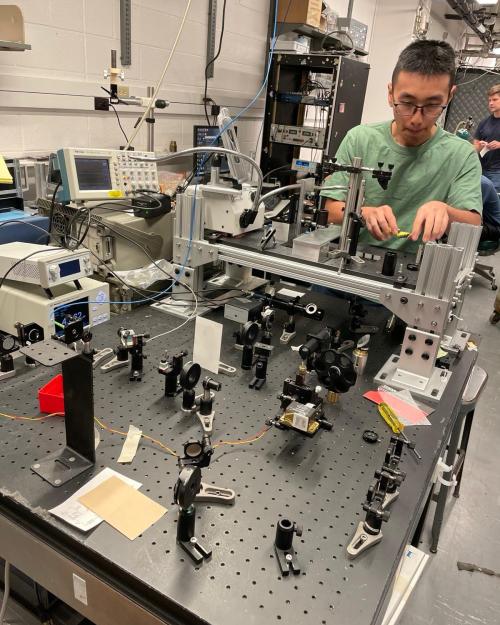For decades, ferromagnetic materials have driven technologies like magnetic hard drives, magnetic random access memories and oscillators. But antiferromagnetic materials, if only they could be harnessed, hold out even greater promise: ultra-fast information transfer and communications at much higher frequencies – a “holy grail” for physicists.
Now, researchers have taken a meaningful step towards utilizing antiferromagnets for new technologies. In “Spin-filter tunneling detection of antiferromagnetic resonance with electrically-tunable damping,” published July 10 in Science, they describe their innovative approach for both detecting and controlling the motion of spins within antiferromagnets using 2D antiferromagnetic materials and tunnel junctions.
Both types of materials contain atoms that act like tiny individual magnets, each having “spin.” In a ferromagnet, all of these atomic spins are aligned, producing an external magnetic field. In an antiferromagnet, atomic spins cancel when they are added up, so no external magnetic field is produced. That’s why it’s difficult to not only detect the motions of spins within antiferromagnets but also control the motion of their spins.
Previously, detections of the spin dynamics in antiferromagnets occurred with millimeter or larger samples, “not something that really scales down to any kind of useful device scale,” said co-corresponding author Daniel Ralph, F.R. Newman Professor of Physics in the College of Arts and Sciences and a member of the Kavli Institute at Cornell. “What we’ve done is make micrometer-scale devices where we can see strong signals, using tunnel junctions to be able to detect the spin motions electrically – and that’s nearly a factor of 1,000 smaller than what’s been done before.”
Tunneling is a sort of quantum mechanical leaking of an electron through a barrier that a classical particle wouldn’t be able to get through; it’s not a direct flow of electrons across, but a penetration of an electron wave function as it goes through a barrier, Ralph said. “Electrons can do funny things,” he said, adding that tunneling is a common device used in all kinds of technologies.
When the spins in the antiferromagnet change their directions inside a tunnel junction, this changes the electrical resistance associated with the tunneling electrons, providing a way to measure the spin dynamics.
This electrical detection works at very high speeds. Most technologies are not equipped to detect at that frequency.
“This is one of our breakthroughs: that we’re using this tunneling behavior, which is this quantum mechanical electron behavior, to really read out these extremely fast oscillations,” said co-corresponding author Kelly Luo, a former Presidential Postdoc/Kavli Institute Experimental Fellow at Cornell, now an assistant professor at the USC Dornsife College of Letters, Arts and Sciences.

Their breakthroughs came in part by interweaving two fields: 2D materials and spintronics, also known as spin electronics, said lead author Thow Min Jerald Cham, M.S. ’21, Ph.D. ’24.
To help control the spins within the 2D antiferromagnet, the researchers used a mechanism known as spin-orbit torque. They passed a charge current through a material to make a spin current that can interact with the magnet, to apply a torque to the magnet and make it move.
“We were mainly searching for a way to manipulate the spins so that we could detect the 2D layers separately, and we couldn’t really distinguish which layer was doing what. Then we came up with this idea, where we could break the symmetry by twisting the layers,” said Cham, who is now a postdoctoral scholar at California Institute of Technology.
With this geometry, we can use applied currents with spin-orbit torque to apply a force to just one of the spin layers and not the other, a first step for controlling the spin dynamics,” Ralph said.
“Our studies shows that antiferromagnetic materials have great potential,” the researchers wrote, “for realizing nano-oscillators for high-frequency applications”— an avenue they continue to explore.
Other co-authors are Xiaoxi Huang, postdoctoral associate in Ralph’s lab; Daniel G. Chica and Xavier Roy, Columbia University; and Kenji Watanabe and Takashi Taniguchi, National Institute for Materials Science, Japan.
Support for the research included funding from the National Science Foundation and the U.S. Department of Energy.
This article also appeared in the Cornell Chronicle.
Linda B. Glaser is news and media relations manager for the College of Arts and Sciences




